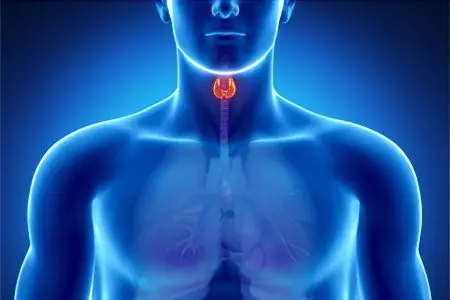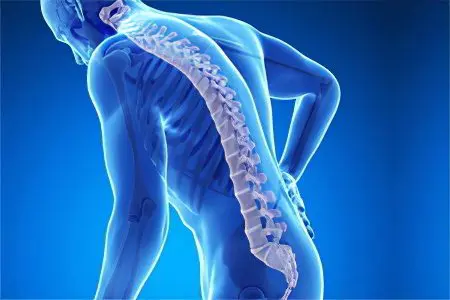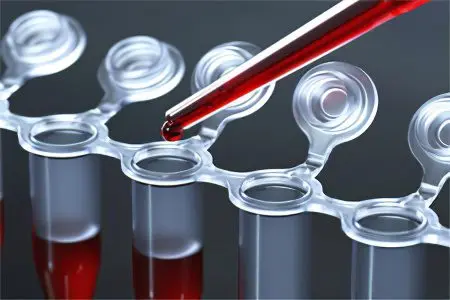Contents

Calcium is a trace element, which, in terms of its content in the body, significantly exceeds the quantitative composition of other chemical elements. Calcium (Ca2+) solves many problems, providing important functions of the human body.
Blood calcium contains no more than 1% of the total amount of calcium in the body. The remaining 99% are in the teeth and skeleton, in which calcium is represented by the mineral Ca10(PO4)6(OH)2 and combined with phosphorus.
Normal blood calcium levels range from 2,0-2,8 mmol/L. According to some reports, the limits of the norm can be 2,15-2,5 mmol / l.
1,1-1,4 mmol / l is the normal level of ionized calcium in the blood.
0,1-0,4 g of calcium every 24 hours is excreted from the body by the kidneys of a healthy person along with urine.
Why do we need calcium?

Determining the level of calcium in the blood is often required to diagnose various diseases.
After all, in the body it is responsible for many important functions:
Without calcium, normal muscle contractility is impossible.
Calcium is involved in the transmission of nerve impulses, regulates heart rhythms. These functions are controlled by calcium together with magnesium.
Calcium stimulates the work of many enzymes, is involved in the metabolic processes of iron.
Teeth and bones would not have their strength if they did not have enough calcium and phosphorus.
Calcium affects cell permeability.
Calcium is involved in the formation of a thrombotic clot at the stage of converting prothrombin to thrombin. If the trace element is not enough, then normal blood clotting is impossible.
Calcium activates part of the hormones in the body.
Calcium takes part in the normal functioning of the endocrine glands. So, without it, the parathyroid gland cannot fully function.
Calcium is involved in the processes of cell reception, in which cells exchange information with each other.
A person cannot be healthy if there is not enough calcium in his body. Without this trace element, high-quality and full sleep is impossible.
Normal values of calcium in the body depend on the age of the person:
1,90-2,60 – a newborn child in the first 10 days of life.
2,25-2,75 – a child older than 10 days and under the age of 2 years.
2,20-2,70 – a child 2-4 years old.
2,10-2,55 – teenager 12-18 years old.
2,15-2,50 – an adult 18-60 years old.
2,20 -2,55 – an elderly person 60-90 years old.
2,05-2,40 – people over 90 years old.
Depending on the age and gender of a person, the daily intake of calcium will differ.
The dosage is given in milligrams:
200 – for children under 6 months.
400 – for children from six months to a year.
600 – for children 1-4 years old.
1000 – for children 4-11 years old.
1200 – for teenagers 11-17 years old.
1200 – for all adults.
1200 – for men 50-70 years old.
1400 – for women 50-70 years old.
1300 – for people over 70 years old.
1500 – for women who are expecting a child or breastfeeding mothers.
It should not be assumed that a large amount of calcium in the body is beneficial to health. If its concentration in plasma exceeds the permissible values, then this leads to a drop in the level of phosphorus. If there is little calcium in the blood, then the amount of phosphates in it will begin to increase. Both of these conditions are pathological and entail violations in the most important functions of the body.
What determines the level of calcium in the blood?

The level of calcium in the blood has a direct relationship with its exchange in the bones of the skeleton, with the quality of its absorption in the intestines and reabsorption by the kidneys. Other trace elements, primarily magnesium and phosphorus, are responsible for the balance of calcium in the body. Also able to increase or decrease the level of calcium in the blood are sex hormones, hormones of the endocrine glands, adrenal glands, as well as the active form of vitamin D3.
So, the following components influence the level of calcium in the blood more strongly than others:
Parathyroid hormone (parathormone). It is produced by the parathyroid glands. With its excessive release, as well as against the background of an increased content of phosphorus in the blood, the processes of inhibition of bone tissue formation will be launched in the body. Parathyroid hormone leads to the fact that the level of calcium in the blood rises, and in the bones it becomes less.
Calcitonin, on the contrary, reduces the level of calcium in the blood, transporting it to the bone tissue.
Vitamin D3, which is produced in the active form by the kidneys, can lead to an increase in the level of calcium in the blood, as it enhances the absorption of this trace element in the intestine.
Calcium can be present in the blood in several forms:
Calcium ions – CA2+. This form of calcium is called free or ionized. Of the total amount of calcium, the share of the ionized trace element accounts for about 55-58%.
Calcium, which is in conjunction with protein fractions. It accounts for about 35-38%.
Calcium salts, which account for about 10%. Calcium present in the blood in this form is called complexed. It can act in combination with phosphates – Ca3(PO4)2, citrates – Ca3(C6H5O7)2, lactates – 2(C3H5O3)*Ca) and bicarbonates – Ca(HCO3).
If doctors talk about an increase in the level of calcium in the blood, then it means that all its forms are elevated. Only ionized calcium exhibits metabolic activity. It is he who is more involved in all the needs of the human body. At the same time, for the diagnosis of various conditions, it is not required to determine the amount of ionized calcium. This study is highly specialized. To obtain adequate data, you can set the total level of this trace element in the blood.
If the concentration of protein in the blood is lowered, then the analysis may show a normal level of calcium. To find its real values, it will be necessary to apply a technique that is aimed at calculating the ionized form of the microelement, since it is it that replaces the complexed form of calcium. To identify such a deficiency, a more thorough study is required.
If a person with chronic diseases has a reduced level of protein in the blood, this leads to the development of calcium deficiency in the serum. Most often, this situation is observed in lesions of the kidneys and liver. The level of this trace element also decreases, provided that a person receives less of it with food. In pregnant women, there may be a drop in calcium levels, but the concentration of albumin in the blood will always be reduced.
Causes of low calcium levels in the blood

Hypocalcemia is the scientific name for a condition characterized by low levels of calcium in the blood. Most often, its fall is caused by a decrease in the level of albumin (a protein component of the blood). In this case, there is a deficiency of only protein-bound calcium, and ionized calcium will remain within the normal range.
Other causes that can lead to hypocalcemia:
Failure of the parathyroid glands, the ingress of parathyroid hormone into the blood.
The absence of parathyroid glands as a result of the operation.
Lack of vitamin D.
Chronic renal failure, nephritis.
Spasmophilia and rickets in a child.
Acute deficiency of magnesium in the human body.
Immunity of the body to the effects of parathyroid hormone, due to congenital developmental anomalies.
Low calcium content in foods that a person consumes.
High levels of phosphate in the blood.
Severe diarrhea.
Serious liver damage (cirrhosis).
The presence of osteoblastic metastases in the body, which require a lot of calcium to continue their pathological growth.
Hyperplastic changes in the tissue of the adrenal glands.
Taking medications for the treatment of epilepsy.
Transfusion of impressive volumes of blood, which contains citrate.
Alkalosis in the acute phase.
Diseases such as: alcoholism, acute pancreatitis, colitis. They are combined into one group, since each of them does not allow calcium to be normally absorbed into the blood from the gastrointestinal tract.
Symptoms of low and high calcium levels in the blood

The level of calcium in the blood is determined not only in the presence of any pathologies, but also during a medical examination by an absolutely healthy person. However, this study cannot reflect the exact state of the bone tissue.
The following symptoms will indicate a high level of calcium in the blood:
Complete or partial lack of appetite.
Nausea, which may be accompanied by vomiting.
Tendency to constipation.
Abdominal pain.
Frequent night trips to the toilet to empty the bladder.
Constant thirst.
Pain in the bones.
Headache.
Increased fatigue.
Spleen, depression and apathy.
Symptoms of low calcium levels in the blood include:
Abdominal pains like spasms.
Tremor of hands and fingers.
Numbness in the region of the nasolabial triangle.
Arrhythmias.
Spasms of the muscles of the feet and hands.
If a person does not have signs indicating a deficiency or excess of calcium, but the analysis indicates the opposite fact, then a comprehensive examination is necessary.
For this, diagnostic measures such as:
Determination of the level of ionized calcium in the blood.
Determination of the level of calcium in the blood.
Determination of the level of phosphorus in the blood.
Determination of the level of magnesium in the blood.
Determination of the level of vitamin D in the blood.
Determination of the level of parathyroid hormone.
Sometimes, in order to diagnose a particular disease, it is required to find out the ratio of calcium in the blood in relation to other substances. For example, such studies make it possible to determine the excessive excretion of calcium in the urine, or its insufficient intake with food.
If the patient suffers from kidney failure, or he has had a transplant of this organ, then the level of calcium in the blood is measured in a planned manner. Also, this analysis is carried out for all patients with myeloma and ECG disorders, with tumors of a malignant nature in the chest, lungs, thyroid gland, brain and throat.
What can affect the results of the analysis?

In a newborn child, starting from the 4th day of his birth, there is an increase in the level of calcium in the blood, which is a physiological norm. This process can be observed both in the body of children born on time, and in premature babies.
In adults, calcium levels may increase when taking the following drugs:
Antacids.
Hormonal drugs: androgens, progesterone, parathyroid hormone.
Vitamins A, D3, D2.
Tamoxifen.
Medicines containing lithium salts.
The following drugs can reduce the level of calcium in the blood:
Gentamicin.
Calcitonin.
Preparations for the elimination of seizures.
Magnesium salts.
Laxative drugs.
Other reasons that may affect the results of the analysis:
Collection for analysis of hemolyzed serum.
Blood sampling against the background of dehydration.
Blood sampling against the background of hypervolemia, which can be observed with intravenous administration of impressive volumes of isotonic solution.
Useful information about calcium in the blood:
In premature infants with low body weight, blood is taken daily for the determination of ionized calcium. This avoids the development of hypocalcemia, which in the early stages may not manifest itself in any way.
Calcium levels in urine and blood do not reflect the level of calcium in bone tissue. To determine the level of calcium in the bones, a diagnostic method such as densitometry is used.
The older a person is, the lower his level of calcium in the blood. The same applies to pregnant women.
The higher the level of albumin in the blood, the higher the level of calcium. This protein has no effect on ionized calcium.
Before taking the test, you will need to stop eating for 12 hours. 30 minutes before the procedure, you need to exclude any physical activity, do not smoke and be in a calm state.
When are additional research methods required?
It is imperative to determine the degree of activity of calcium ions, provided that its level in the blood is reduced or increased, and symptoms of these disorders develop. The level of ionized calcium is measured in pH = 7.40.
You can also measure the calcium content in urine, which will determine the amount of trace element excreted by the kidneys. This study is carried out with changes in the concentration of calcium in the blood.










